Maryland has plenty of opportunities for those looking to spend time outdoors near fresh water. There are over 100 lakes in Maryland. Additionally, the state has several major rivers. The largest rivers in Maryland are the Potomac, Susquehanna, Youghiogheny, and Patuxent. But are there any dangerous animals in Maryland’s lakes and rivers?
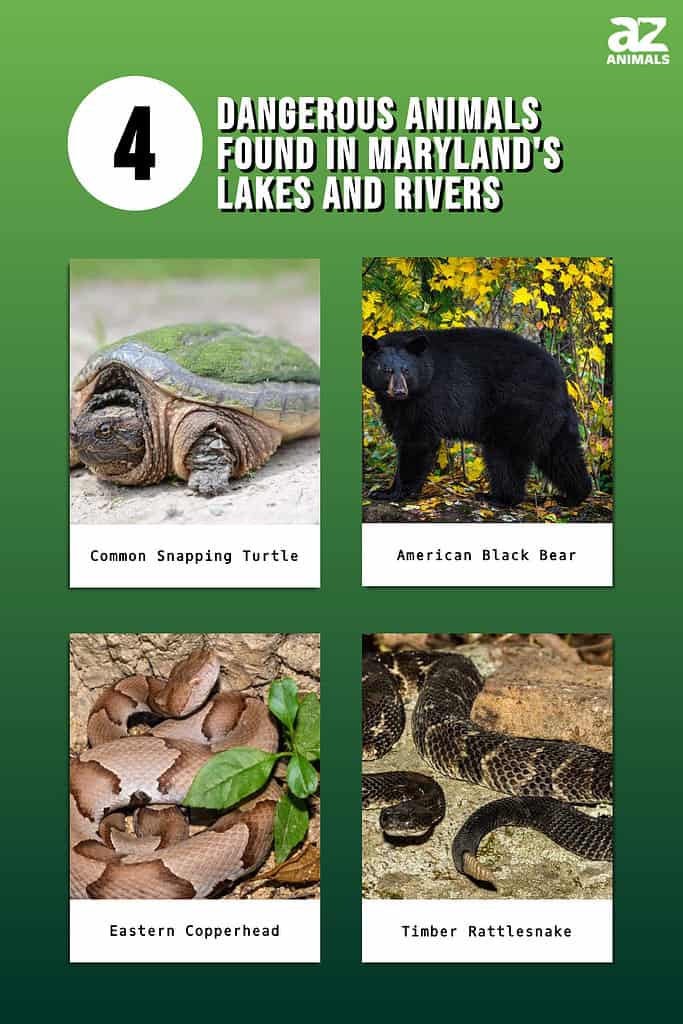
There are very few dangerous animals in Maryland, and they all typically avoid humans. Wild animals are most dangerous when they are either surprised or provoked by humans. As long as a person keeps a safe distance and respects the space of wild animals, it is unlikely that these animals will cause harm. This article covers the most potentially dangerous animals in and around Maryland’s lakes and rivers.
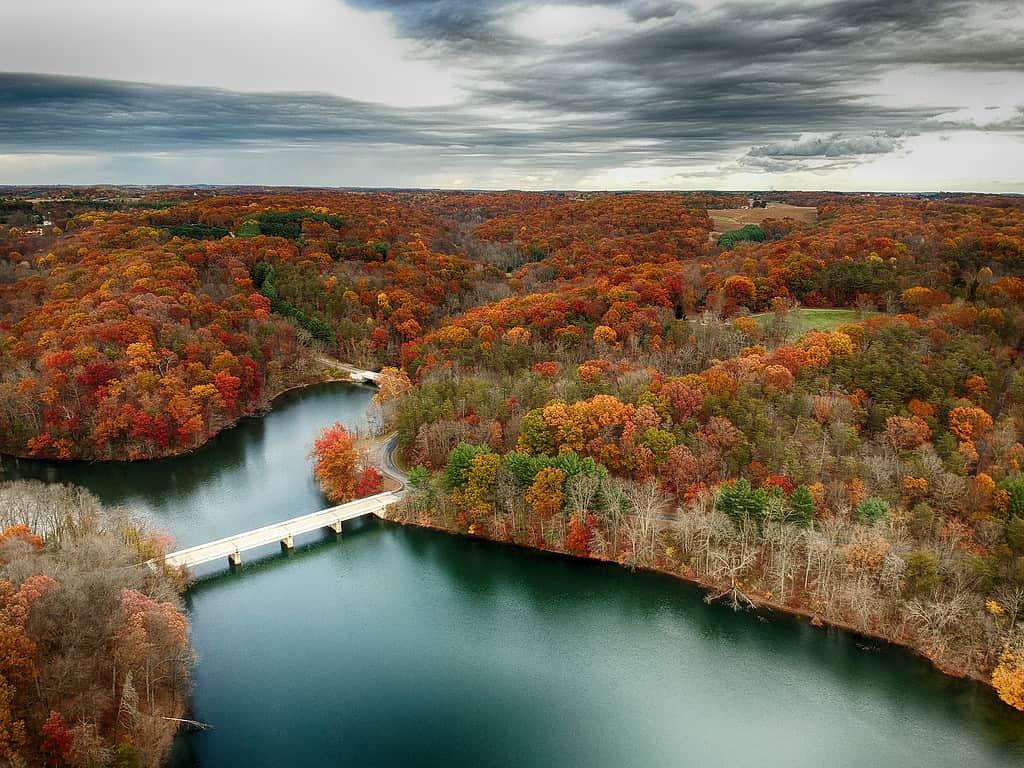
Little Seneca Lake is one of over 100 lakes in Maryland.
©hafakot/Shutterstock.com
Are Lakes and Rivers in Maryland Dangerous?
North America generally has fewer dangerous animal species than some other continents. For example, while there are around 375 species of venomous snakes in South America, there are only around 30 in North America. When visiting lakes and rivers in Maryland, the water itself is a more dangerous factor than wild animals.
To keep yourself safe when visiting lakes and rivers, follow guidelines for outdoor water safety. River swimming can be highly dangerous due to fast currents and cold temperatures. In fact, it is illegal to swim in the Potomac River between Great Falls and southern Maryland because of safety concerns. Even if the water looks calm on the surface, there can be powerful underwater currents. Hypothermia is also a risk in Maryland’s rivers, and the safest time to visit them is summer, once the water has warmed up. For these reasons, the safest way to swim is at established swimming areas.
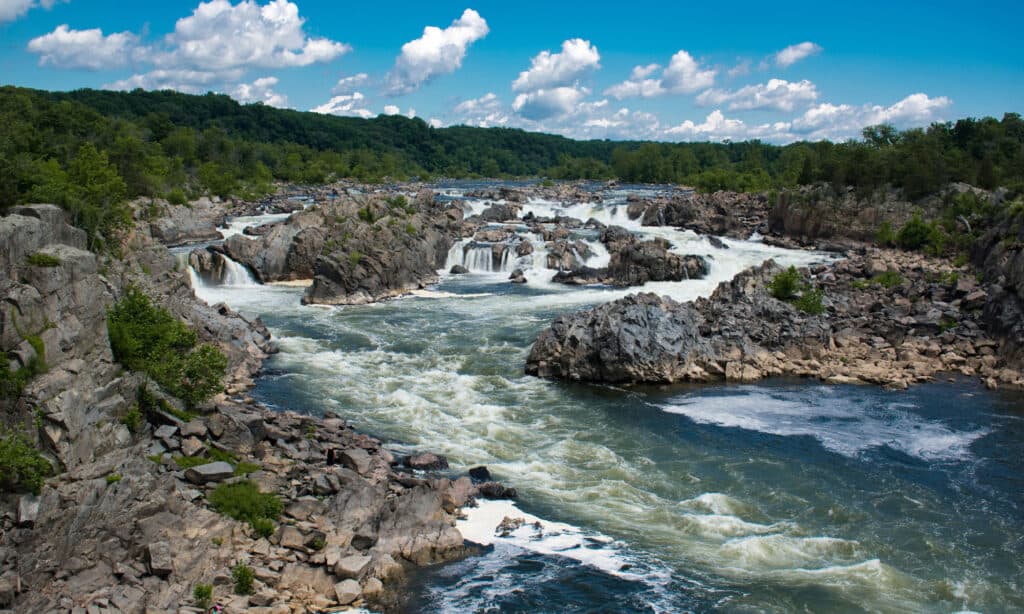
Great Falls Park is on the Potomac River, which is the border of Maryland and Virginia.
©iStock.com/Douglas Rissing
One Dangerous Animal in Maryland’s Lakes and Rivers
What is the one potentially dangerous animal in Maryland’s lakes and rivers? The common snapping turtle is the only animal to be aware of, and it generally does not pose a threat to humans.
Common Snapping Turtle (Chelydra serpentina)
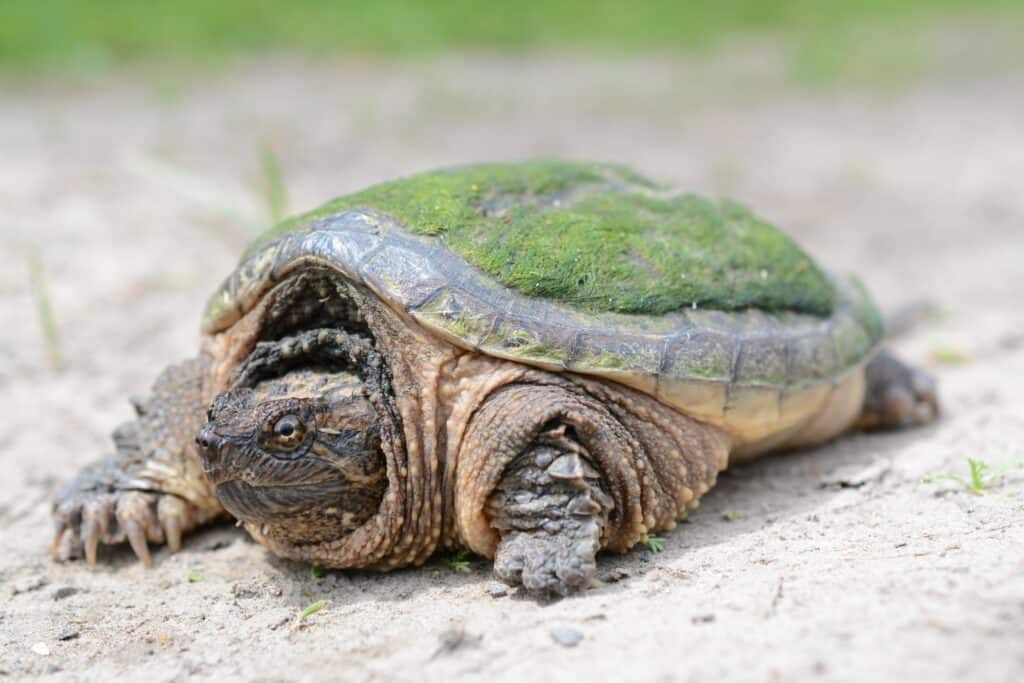
Common snapping turtles can for more than 40 years.
©Trevor Meunier/Shutterstock.com
The common snapping turtle is a freshwater turtle that is widespread in the United States. These turtles live as far west as the Rocky Mountains and as far east as Florida and Maine. Common snapping turtles are large species, with an average length of 8 to 14 inches. The average weight of a common snapping turtle is 10 to 35 pounds. The largest wild common snapping turtle ever recorded was a whopping 75 pounds!
Common snapping turtles are omnivorous. They find food by scavenging plants and ambushing prey. Common snapping turtles have powerful jaws and sharp beaks. However, these turtles do not have any teeth, so they must swallow prey whole. Some common prey animals of snapping turtles are small birds, fish, and amphibians.
Despite their powerful jaws and sharp beaks, common snapping turtles pose very little threat to humans. These turtles mostly prefer to keep their distance. They will occasionally approach a person swimming to investigate, but they have no interest in biting humans. Common snapping turtle bites are incredibly rare. When they do happen, it is usually when a turtle is being provoked by a human on land.
Most Dangerous Animals Around Maryland’s Lakes and Rivers
Although the common snapping turtle is the only potentially dangerous animal inside Maryland’s lakes and rivers, there are a few potentially dangerous animals that live nearby. When visiting the outdoors in Maryland, be aware of these animals and take the necessary safety precautions to avoid a dangerous encounter.
American Black Bear (Ursus americanus)
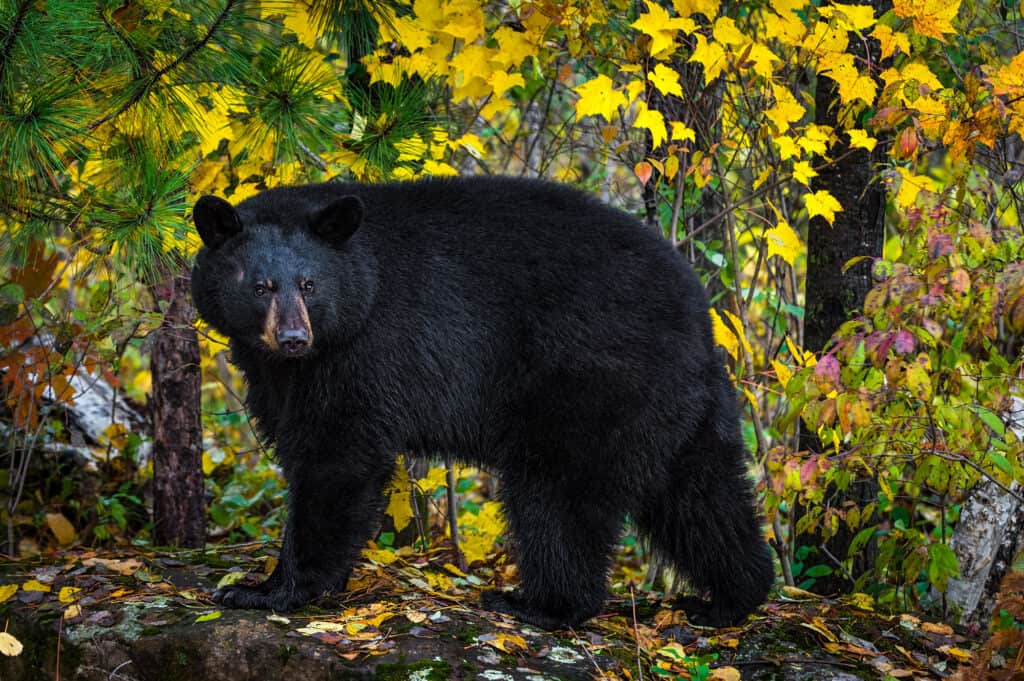
Black bears are omnivorous, meaning they can feed on a wide range of plants and animals.
©Holly Kuchera/Shutterstock.com
American black bears are the smallest species of bear in North America. There are 16 subspecies of American black bear. Eastern black bears (Ursus americanus americanus) are the subspecies found in Maryland. American black bears can be a variety of colors, despite their name. These bears can be black, brown, or blonde. However, Black bears in Maryland tend to have black fur. The size of American black bears can vary greatly depending on age, sex, location, and season. Adult males can weigh between 126 and 551 pounds. Adult females can weigh between 90 and 375 pounds. However, these bears do occasionally grow much larger. The largest black bear ever caught in New Jersey weighed 829 pounds!
American black bears are omnivorous, and vegetation makes up most of their diet. Black bear attacks on humans are exceptionally rare, with an average of only one fatal attack every year in North America. As long as a person keeps a safe distance and practices bear safety, it is unlikely that any harm will come from a black bear encounter.
Eastern Copperhead (Agkistrodon contortrix)

Eastern copperheads are not aggressive, but bite people because they get stepped on.
©Jeff W. Jarrett/Shutterstock.com
The eastern copperhead is a venomous pit viper that lives in North America, and one of Maryland’s two venomous snake species. Copperheads are recognizable by their pale and pinkish-tan coloring. Eastern copperheads are typically 27 to 30 inches in length. Their heads are broad, and their bodies are stout. In spring and summer, copperheads are active during the day. However, during summer they are nocturnal.
Eastern copperheads are not aggressive and prefer to avoid humans. Even in the rare case that a copperhead bite does occur, these bites are highly unlikely to be fatal. When faced with a human, eastern copperheads typically freeze rather than retreat. If confronted, a copperhead may vibrate its tail as a defensive response. Due to their tendency to freeze, most copperhead bites occur from a person accidentally stepping on or near them. If a copperhead is surprised or provoked, it may first deliver a “warning bite” with little to no venom. In fact, most copperhead bites do not require antivenom. When in a place where copperheads live, it is important to watch your step and respect a copperhead’s space. Additionally, take safety precautions when recreating in places where copperheads live.
Timber Rattlesnake (Crotalus horridus)
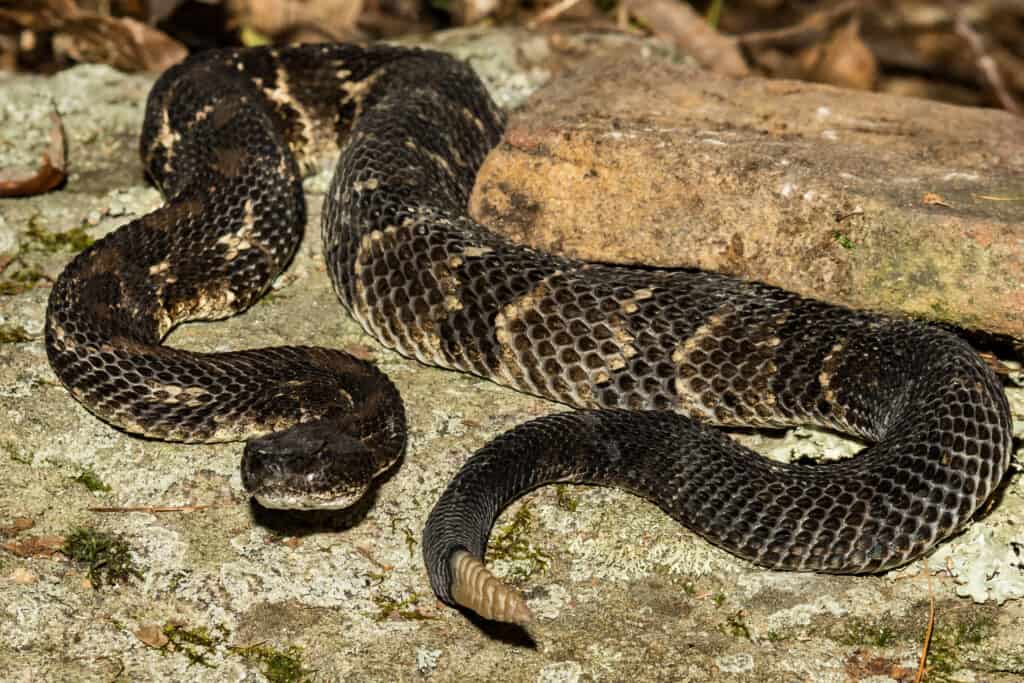
Timber
rattlesnakes
are extremely venomous, but they are not typically aggressive.
©iStock.com/JasonOndreicka
The timber rattlesnake, another species of pit viper, is Maryland’s other venomous snake. Timber rattlesnakes are found throughout the eastern United States. Adult timber rattlesnakes are typically 36 to 60 inches in length and weigh one to two pounds. Their coloring is dark gray or yellow brown with dark-brown or black crossbands. However, some timber rattlesnakes are nearly black due to melanism. Melanism is when an organism has more melanin pigments, resulting in a darker color. Like all rattlesnakes, timber rattlesnakes have rattles at the end of their tails. A timber rattlesnake’s rattles are made of keratin, the same substance that human hair and nails are made of.
Timber rattlesnakes are one of the most potentially dangerous snakes in the country, due to their highly toxic venom. However, these snakes generally have a mild disposition and prefer to retreat from any contact with humans. The greatest risk of a bite happens when humans approach and provoke these snakes. Even when provoked, timber rattlesnakes generally give a long warning before delivering a bite by rattling their tails. Respecting these snakes by giving them plenty of space is the safest and most humane option. Observe safety precautions to avoid a potentially dangerous encounter.
Summary of 4 Dangerous Animals Found in Maryland’s Lakes and Rivers
| # | Animal |
|---|---|
| 1 | Common Snapping Turtle |
| 2 | American Black Bear |
| 3 | Eastern Copperhead |
| 4 | Timber Rattlesnake |
The photo featured at the top of this post is © hafakot/Shutterstock.com
Thank you for reading! Have some feedback for us? Contact the AZ Animals editorial team.






